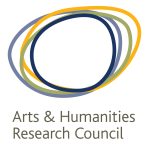

The key aim of this AHRC-funded project, run by Dr Katherine Ebury of the University of Sheffield, is to examine how the cultural and ethical power of literature offered early twentieth-century readers opportunities for thinking through capital punishment in the UK, Ireland and the US in the period between 1900 and 1950. The project will run from February 2018-January 2020 and updates on our progress will be posted here.
Further, during this period both literature and conceptions of justice were profoundly influenced by the developing science of psychoanalysis. In a 1926 article ‘Über die Todesstrafe’ Thomas Mann used Freud’s Totem and Taboo in support of his view that capital punishment was inherently retributive. And in fact, Freud published a short anti-death penalty tract called ‘View on Capital Punishment’; his followers Theodor Reik, Hans Sachs and Marie Bonaparte would lobby powerfully against the death penalty using psychoanalytic arguments. This aspect of the history of psychoanalytic theory has been insufficiently studied, but it was one of the key ways in which psychoanalysis made a major intervention in culture, as there was a general consensus in support of the death penalty except for specific writers and specific advocacy groups. In fact, the impact on readers of literary representations of the death penalty informed by psychoanalysis cannot be overestimated, given that capital punishment was no longer a public spectacle.
The project will examine the way that the death penalty had gone into the cultural unconscious, its reality only accessible by means of imaginative effort, and how efforts by literature and psychoanalysis to imagine and reimagine the death penalty had a powerful effect on public debate in the period.